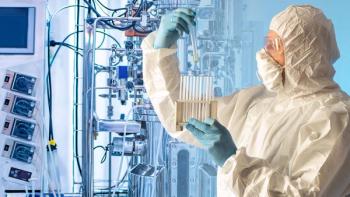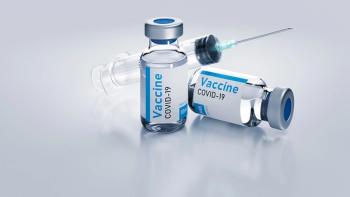
- BioPharm International-06-01-2006
- Volume 19
- Issue 6
Filter Integrity Testing in the Pharmaceutical Process Environment
Air filtration also needs a filter integrity test method to guarantee the sterility of critical parameters.
Integrating filtration steps into an aseptic pharmaceutical process has some unusual complications. Various factors, such as particle load, fluctuations in pressure and temperature, and cleaning steps (which may have high temperatures or severe changes in pH), can cause wear to the filter elements.
Reinhard Baumfalk, Ph.D
Continued performance of the filter elements becomes one of the critical process parameters that must be controlled.1,2,3 Using a filter in a process can lead to various damage phenomena such as irreparable blockage of the filter membrane and cracks or changes to the membrane or pore structure. While blockage can be easily detected during the process run, cracks or changes in pore structure cannot be detected that easily.4
There is a method for checking these filter element properties throughout the course of the process—the filter integrity test. A typical four-step integrity test procedure (algorithm) is Figure 1.5 We will delve first into the test methods and then we will describe how to ease the burden by automating the entire cycle. Many industry-specific terms are defined in the glossary at the end of this article.
INTEGRITY TEST METHOD
The four integrity test steps are implemented upstream and downstream of the filtration unit in order to be able to detect any possible changes in filter element properties and thereby supply positive results to confirm the success of the filtration step. The diffusion test and the bubble point test are established, non-destructive test methods. To determine validity, compare the test results to the filter manufacturer's tolerance data. The bases of the tolerance data are validation processes conducted by the manufacturer. These are used to determine tolerances by correlating absolute, destructive test methods (bacteria challenge test) with filter integrity tests. Both test methods rely on a procedure of wetting the filter membrane with a pre-defined medium (typically ultrapure water, but also customer-specific liquids).4
To start the automatic filter test, the filtration housing is disconnected from the actual process, or the filter is installed in a separate test housing. In this procedure, the filter element is pressurized at a specific value on the upstream (non-sterile) side. At this test pressure, the diffusion through the filter membrane is determined for values starting at 0.1 mL/min. By contrast, when the bubble point test is carried out, the applied test pressure is raised successively and the diffusion measured in parallel is monitored to determine any disproportionate increase. This increase in diffusion is caused by the wetting medium being pressed out of the pores of the filter membrane, which initially occurs in the largest pores, thereby providing information about the upper limit of the pore size distribution. Typical bubble point values for microfilters range between 3,000 mbar and 4,000 mbar and, in ultrafiltration, can go up as high as 8,000 mbar. These methods also allow reliable detection of cracks or blockage.
Air filtration also needs a filter integrity test method to guarantee the sterility of critical parameters. Applications for these filter elements include pharmaceutical and biotechnological production systems. Unlike liquid filtration, air filtration elements are based on hydrophobic membranes, which prohibit the test methods previously mentioned (membrane wetting with ultrapure water).
In this context, an alternate, non-destructive method—the water intrusion test (WIT)6 —is an established test. During the WIT test, or the very similar water flow test (WFT), the penetration of water into the hydrophobic membrane is measured under pressure and evaluated by comparing the results to a limit value. Additionally, this filter type can be tested by a diffusion test after wetting the membrane by liquids with low surface tension such as isopropanol or mixtures of WFI and isopropanol.
Air filters are sterile barriers that typically are sterilized prior to the test step (Process step 1 in Figure 1), at the same time the production system is sterilized. They can no longer be removed for the test or during the test, but may only be accessed from the non-sterile process direction. Since the sensitive measurands (diffusion, bubble point or water intrusion value) can already be determined within the upstream volume, no contact or inflow to the sterile area is necessary and process-relevant sterile barriers remain intact.
Figure 1. Process integration of a filter integrity tester
All of these test methods give results as either a flowrate (diffusion test, water intrusion test, water flow test) or a pressure value (bubble point test, pressure drop test) which has to be compared to the given limit value of the tested filter element in order to pass the test. These limit values are supplied either by the filter manufacturer as part of the validation documents of the filter element, or are determined during a validation process for customer-specific parameters and correlate to a destructive bacteria challenge test.7 Table 1 shows a typical set. Short test descriptions appear in the glossary.
Table 1. Typical limit values for different filter types
AUTOMATED FILTER TESTING
The test algorithm described by Figure 1 consists of several steps to be performed by an automated integrity tester (Figure 2). An automated integrity tester therefore needs to be able to handle pressurized air or WFI, in order to pressurize the filter cartridge with the appropriate media. Based on this requirement, hardware such as valves, pressure transducers, and flowmeters are standard components of a today's integrity tester. Typically these parts are controlled by micro-controller-based hardware and run by proprietary firmware (GAMP class 2 or 3).8 Since integrity testers are not only used in a well-defined laboratory environment, but also installed in a rough production process, the integrity tester manufacturer has taken these conditions into consideration. Hardware components should be made of appropriate materials (stainless steels are favored) and have the needed process reliability. Software has to cover the normal operating conditions, and also be able to detect critical changes of process parameters such as temperature or supply media (pressurized air). Often, these requirements are met by an automated functionality test or separate software control loops within the test procedure.
Figure 2. Standard integrity test algorithm 11
To meet the needs of process integration, most of the available integrity testers have interfaces in order to use additional external hardware. External valves mounted on the filter housing can be handled directly, or controlled by sending commands via a PLC interface. External sensors can be connected in order to perform the measurement directly at the filter housing, because long tubing lengths could interfere with the accuracy of the measurement.
Because the WIT and WFT test use WFI as penetration media for the filter membranes, additional dedicated equipment has been developed by most of the integrity test manufacturers. A trolley equipped with a stainless steel vessel stores the needed water volume under sterile conditions. A PLC allows automated CIP or even SIP procedures for the vessel, with valves permanently connected.
Filter Integrity
Electrical interfaces are specified based on serial protocols, such as RS232 or RS485, or based on the Ethernet/TCP/IP protocol. These interfaces allow a data transfer, or even a remote control of the integrity tester, by a PLC or MES software.
PROCESS INTEGRATION
Data handling involved in integrating an integrity tester into a filtration process can generally be accomplished in one of two ways: electronic data storage in a 21 CFR Part 11 environment or hard copy printouts where no data are stored. Hard copy is not covered under 21 CFR Part 11.9,10
In addition to deciding on the method of data storage, the integrity tester needs to be qualified before it can be used in the production environment. Qualification is typically divided into three steps, namely Installation Qualification (IQ), Operational Qualification (OQ) and a Performance Qualification (PQ). We cover this later.
Glossary
When working with electronic data storage, many factors must be considered to properly integrate the integrity tester into the IT process. Not only must the integrity tester fit into the 21 CFR Part 11 environment, but also all other equipment (PLCs, computers, SCADA systems) involved in the data transfer must fit. Also, one must consider the method of data transfer. There are many standards in industry for equipment communication. Some of the more common ones found on integrity testers are Ethernet and OPC servers for communication to computers and RS-232 and Profibus DP for communication to PLCs.
Pay attention to when and how often data are to be transferred from the integrity tester. Integrity testers usually have the ability to transfer data automatically (as it is being created or time based) and manually. It is important that the data be transferred in a timely fashion to a designated computer where the data can be properly archived and backed up. While integrity testers may have the memory to store large amounts of data, they are not intended as the sole data storage location for integrity test data (transient data).
In principle, two strategies for electronic data handling are common. First a strategy described as the "stand alone" setup is based on the capability of the state-of-the-art devices to process and store data. The device is only connected from time to time to the process network containing the archive servers or MES systems. This device needs to have the capability to store data (integrity test parameters as well as test results) since GMP-relevant data are being stored. An audit trail, or user access management, is required since all 21CFR Part 11 requirements have to be met in the device.
In the second setup, the devices are permanently connected to the process network. Due to this permanent connection, in most cases all relevant GMP data are not stored on the device, but directly received from or sent to the MES or PLC system ("unique source principle"). The supervising network can handle the start of integrity tests and running the complete test procedure. Since GMP data are not stored on the integrity test device, it is only a part of a 21 CFR Part 11 system.
If electronic data files of test results are stored on the integrity tester, the 21 CFR Part 11 requirements have to be fulfilled as mentioned above. But because the software capabilities of such a system are much less than that of a common PC, smart solutions have to be found. For instance, electronic data should be stored in separate files. By adding a checksum to each file and naming it with a unique non-reproducible name, it will have the required 21 CFR Part 11 features. Then, the computer or data historian (audit trail) can link the data file to the proper filter and product batch records. This is commonly described as traceability and the file content can be checked for integrity based on the specific checksum. The data file includes all test parameters as well as the actual integrity test value with a definitive pass or fail result. Typically, additional information is also included in the integrity test result file such as product, product lot, filter part number, and filter lot or serial number.
A large majority of existing processes do not have electronic data transfer capability and are organized by a paper-based documentation system. Most integrity testers on the market will have an onboard printer, or a serial port for an external printer. A printout is the only record of the integrity test and it is essential to make a photocopy. Typically, one copy is stored in a safe location while another is incorporated into the batch records for each process run.
QUALIFICATION
Qualification of an integrity tester is an important part of the process integration. Suppliers of integrity testers support customers with the device, and with qualification protocols that are optimized for an efficient and secure qualification process based on the supplier's know-how. Qualification support is typically available from the supplier and ensures that the qualification can be performed in a professional manner. The documentation used, whether the integrity test results are electronic records or hardcopy printouts, is very similar. Additional protocols are used when data transfer is involved.
Installation qualification. A qualification generally starts with the IQ. The purpose of the IQ is to provide documented verification that the integrity tester complies with approved design intentions and the manufacturer's recommendations or requirements. Verification that the proper documentation has been supplied with the unit, a physical inspection of the equipment, and a facility requirements check are common items included in the IQ.
Operational qualification. The purpose of an OQ is to provide documented verification that the equipment performs as intended. There are many items verified during an OQ, with some of the more difficult tests confirming that the actual integrity test result is within specification. Typically, for bubble point, diffusion (forward flow), and water intrusion, the integrity test result will be compared with a measured reference. For example, when testing for diffusion, it is common for the integrity result to be verified using a mass-flow meter. IQ and OQ can be performed by the manufacturer of the integrity tester, or by the end user. Similarly, the IQ and OQ protocols will typically originate from the manufacturer, with the end user using them as is, or modifying them to their validation standards.
Performance qualification. The last part of a validation is the PQ. The purpose of a PQ is to provide documented verification that the equipment can perform effectively and reproducibly based on approved standard operating procedures (SOPs). Typically, actual process filters in the production environment are used during this testing. The end user's SOPs, as well as personnel, are used to perform the PQ. The integrity tester manufacturer may be consulted during the PQ, but typically will not perform the protocols.
CONCLUSION
The integration of filter integrity testers impacts the filtration process, as well as the IT environment. Available integrity testers offer a wide variety of integration options to perform in a laboratory and also in the process environment. Because the integration concept is based on a standard device, which only has to be configured in an appropriate way, qualifying the device within the customer's validation process can be done by using the integrity tester manufacturer's documentation. This possibility leads to dramatically reduced efforts in the qualification procedure and should therefore result in a preferred choice of standard integrity testers to carry out a filter integrity test step in a filtration process.
Quick Recap
Reinhard Baumfalk, Ph.D., is head of systems development of the Biotechnology Division, Sartorius AG, Weender Landstrasse 94-108, D-37075 Göttingen, Germany, +49 551.308.3984 fax +49 551.308.3289,
Jerry Finazzo is product manager of process filtration integrity testing at Sartorius North America, Inc. , 131 Heartland Blvd., Edgewood NY 11717, 631.254.4249 X8375, fax 631.253.5475,
REFERENCES
1. American Society for Testing and Materials. "Standard test method for determining bacterial retention of membrane filters utilized for liquid filtration." ASTM F-838-83. Philadelphia, PA 1993.
2 European Commission. "Guide to good manufacturing practice, Annex 1." Brussels, Belgium 2003.
3. European Medicines Agency. cGMP Note for Guidance on Manufacture of the Finished Dosage Form. London 1996 April Reissue:5-6.
4. Jornitz MW (editor). Advances in Biochemical Engineering/Biotechnology. Sterile Filtration. Vol. 98, Chap. 6. Springer Verlag. Berlin. 2006.
5. Sterilizing Filtration of Liquids. Parenteral Drug Association Technical report #26 PDA J. Pharm. Sci. Technol. 1998; 52 Suppl 1:1-31.
6. Dosmar M, Wolber P, Bracht K, Tröger H, Waibel P. The water pressure integrity test — A new integrity test for hydrophobic membrane filters. Journal of Parenteral Science & Technology. 1992 July-Aug 46(4):102-6.
7. McBurnie L and Bardo B, Validation of sterile filtration. Pharmaceutical Technology, 2004 October.
8. GAMP Guide. Validation of automated systems in pharmaceutical manufacture; Version 4.0; ISPE and GAMP Forum; 2002. Available at:
9. GAMP Good Practice and Compliance for Electronic Records Series: Complying with 21 CFR Part 11, Part 2. ISPE/GAMP Forum & PDA; 2002.
10. FDA. Guidance for Industry: 21 CFR Part 11. Electronic records; Electronic signatures — Scope and application. Pharmaceutical CGMPs. Bethesda Md. 2003 August.
11. Jornitz MW and Meltzer TH. Filtration handbook – Integrity testing. Parenteral Drug Association. Bethesda Md. 2003 January.
Articles in this issue
over 19 years ago
Final Word: The US is Falling Behind on Generic Biopharmaceuticalsover 19 years ago
From the Editor in Chief: When Does Glycosylation Matter?over 19 years ago
Producing Proteins Using Transgenic Oilbody-Oleosin Technologyover 19 years ago
Regulatory Beat: FDA's Field Force Does More With Lessover 19 years ago
Pursuing Pharmaceutical Quality and EconomyNewsletter
Stay at the forefront of biopharmaceutical innovation—subscribe to BioPharm International for expert insights on drug development, manufacturing, compliance, and more.





